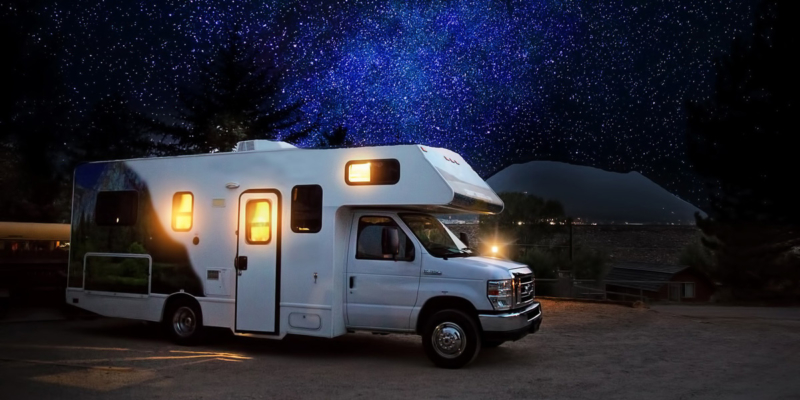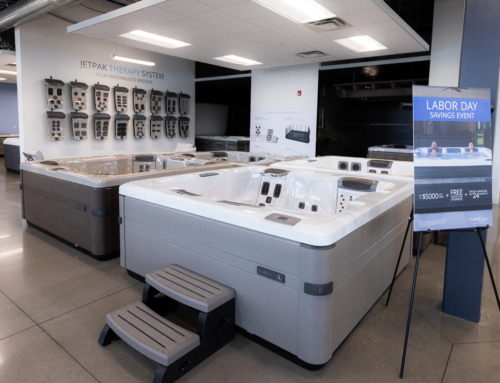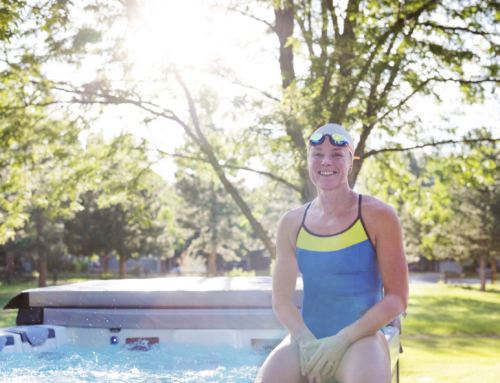Discretionary spending has increased over the past few years as the US economy recovers. This is good news for hot tub retailers, who saw sales growth across the industry in 2016. However, this also spells increased competition between other discretionary markets, including RVs, boats, and travel. How can spa retailers sell their products against such wildly diverse competition? The key is to stop selling products and to start promoting lifestyle.
Lifestyle branding is not new, but has resurged in recent years. Instead of espousing the features and functionality of your merchandise, paint a picture with it. Show your customers how a new spa plays a formative role in the lifestyle identity, both as a representation of who they are and the choices they make. Here, we’ll look at how lifestyle marketing and, in particular, wellness branding can boost your business.
Understanding the Competition
The Rise of the RV
According to the Recreational Vehicle Industry Association, in 2016 RV and camper sales brought in a record of $15.4 billion. The RVIA also predicts that unit shipments will increase by 4.4%, continuing a steady rise that started in 2009. Granted, motorhomes carry a much higher price tag than most hot tub purchases; however, spa retailers can learn from how the RV industry is taking advantage of post-recession discretionary spending.
Selling an Experience
Recent upticks in recreational spending signal a trend toward experiential value. Consumers are looking for an experience from their investments: family vacation, transportation, lodging, sightseeing, etc. They are less concerned with how the features of different products compare to each other; rather, they base their purchases on the perceived lifestyle value.
Where will this RV take me? Will this vacation package bring my family closer together? Will this boat allow me to be more social? Consciously or unconsciously, these are the kinds of questions consumers ask themselves when making big-ticket purchases. As a retailer, it’s your job to help create a narrative for the customer. Paint a picture to illustrate how the product fits seamlessly into their lifestyle, personality, and identity.
As families look for ways to make discretionary purchases more practical, your job as a spa retailer is to apply that same logic in your sales strategy.
The rise in RV sales and other luxury purchases can be attributed to the shift in lifestyle value. These markets saw discretionary spending habits shift toward all-in-one experiences and targeted their branding efforts accordingly. As families look for ways to make discretionary purchases more practical, your job as a spa retailer is to apply that same logic in your sales strategy. Focus on the qualities that make the product essential to the consumer, rather than how one product is better than another.
What Is Lifestyle Branding?
Making a Connection
Creating a loyal consumer base in the spa industry has always come down to one critical aspect: connecting with the customer. Lifestyle branding incorporates that philosophy into your sales strategy. You create an identity for your merchandise, infusing the desires, aspirations, and interests of the consumer into the products themselves.
But where to begin? Effective lifestyle branding requires rethinking your products. What are the qualities of certain hot tubs that make them more desirable? In the past, retailers would espouse the technical features, illustrating how one model performs better than another. However, this method is proving less successful. Instead, show the customer how a new spa can improve their well-being. Focus on the necessity of owning a spa rather than the luxury.
Break Away From the Competition
In taking a lifestyle approach to marketing, you free your business from the usual binds of categorical competition. You no longer need to convince your customers that buying a spa is a better investment than a boat; rather, you must illustrate how purchasing a spa will benefit their way of life and how it can easily be used on a daily basis.
Caution is advised, however. According to the Marketing Science Institute, retailers who take a lifestyle approach “may be setting themselves up for even fiercer competition.” In effect, you are positioning your business in competition with every other company–regardless of industry–vying for brand interest. Yet, in the case of the hot tub and spa industry, the reward is well worth the risk.
Luxury Vs. Necessity
Since the recession, luxury has become a hard selling-point. Even as consumers are spending more on discretionary purchases, they are justifying them as essential quality of life improvements. Whereas promoting recreation and relaxation were once enough to sell a hot tub, it is no longer the case. You must augment these qualities with practicality. In essence, you must sell the concepts of recreation and relaxation as being an essential part of one’s lifestyle.
Luxury With a Purpose
Though priorities have shifted, the desire for the “good life” hasn’t disappeared. Luxury can still play a role in your marketing strategy, but cannot be the entirety. Instead, focus on the benefits that enhance customers’ lives. This requires communicating with consumers, understanding their needs, and being comfortable discussing them. Rather than share vague notions of a better life, emphasize the specific benefits a spa has for everyday health, stress relief, and therapy. As a result, the conversation shifts from what consumers want to what they need.
Marketing Health and Wellness
One of the more successful lifestyle positions, health and wellness marketing has proven to be a diamond in the rough for hot tub retailers. Traditionally, retailers would avoid the topic of health needs with consumers. However, as self-care and wellness have become more prevalent in retail culture, spa dealers have begun gearing their marketing efforts toward health benefits.
Understanding the Benefits
Over the past decade, studies have brought the health benefits of spas to light. As a dealer, you should take advantage of these findings to promote your merchandise as a well-being essential. By reaching out to the wellness consumer base, you take the focus off luxury and recreation as the primary selling point. Instead, you present a narrative that markets your products as lifestyle necessities, as parts of everyday lives.
In order to effectively market the wellness qualities of your hot tubs, you need to do the research upfront. While there are a variety of health benefits you can promote, some of the more recent discoveries include help with:
- sleep therapy;
- diabetes treatment;
- stress and anxiety relief;
- and arthritis relief.
In an interview with Pool and Spa News, Don Riling, owner of Olympic Hot Tub in Seattle, claims that the biggest misconception in the spa industry is that the hot tub “is still a luxury item instead of something people need for health and wellness, that it’s just a nice-to-have item or a dream item.” Taking a page out Riling’s book, manufacturers and retailers alike need to move away from luxury branding and gear marketing toward lifestyle and wellness.
The Call for a Consumer Campaign
Lifestyle branding doesn’t occur on a retail level alone. Manufacturers need to play a supporting role in positioning hot tubs and spa products among other discretionary lifestyle markets, such as RVs and boats. A coordinated, industry-wide consumer campaign can bring the wellness narrative to the forefront of branding.
Even as consumers are spending more on discretionary purchases, they are justifying them as essential quality of life improvements.
Speaking with Aqua Magazine, Larry Berczyk, Co-Owner of Valley Pools & Spas in Minnesota and Wisconsin, admits, “The boat and RV industry have it right. Whoever is leading them is doing it right, and we just don’t have that type of leadership in the hot tub industry. And we need somebody or some group of people to draw everybody together.” Are the spa brands you sell responding to this need, making concerted efforts to improve lifestyle and wellness branding?
Building a Cohesive Brand
In short, driving consumers away from other markets requires smarter market insight and desirable lifestyle branding. In knowing the consumer base, you can better suit their needs and understand their decisions. In promoting lifestyle benefits over product features, you can create a sales narrative that speaks to the customer, not at them. Boosting your sales doesn’t always mean lowering prices, changing manufacturers, or espousing grandeur. Instead, it’s a return to basics: get to know your consumer base and offer a product that can make their lives better.









Leave A Comment